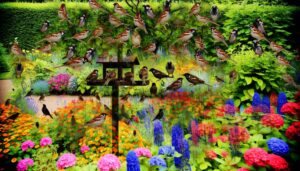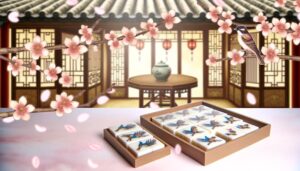What Does Sparrow Mean in The Royals?
In 'The Royals,' the sparrow symbolizes humility, resilience, and the value of the common people. Historically, sparrows have signified humility and connected with the working class.
They represent simplicity and community, embodying themes of cooperation and collective strength. Within the narrative, the sparrow reflects characters' loyalty and wisdom, as well as their pursuit of freedom and autonomy.
Its representation in 'The Royals' enhances the story's emotional depth and resonance, demonstrating the power of common folk and their profound impact on overarching themes. For further insights into these intricate connections, one can explore the detailed symbolism more thoroughly.
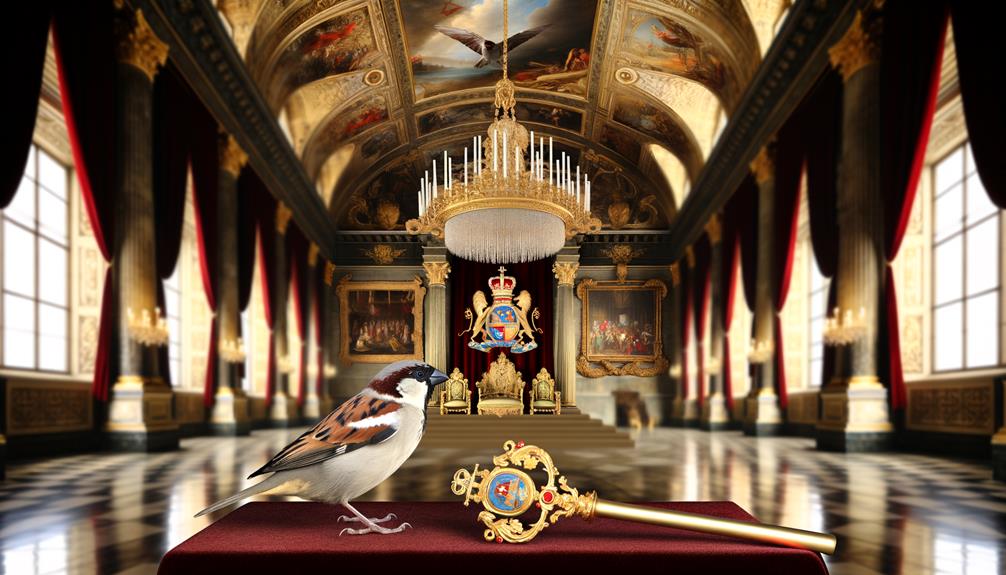
Key Takeaways
- Sparrows in "The Royals" symbolize humility and simplicity.
- They represent the common folk and the working class.
- Sparrows emphasize the importance of community and cooperation.
- They signify resilience and the quest for freedom.
- Sparrows highlight the themes of transformation and self-determination.
Symbolism of the Sparrow
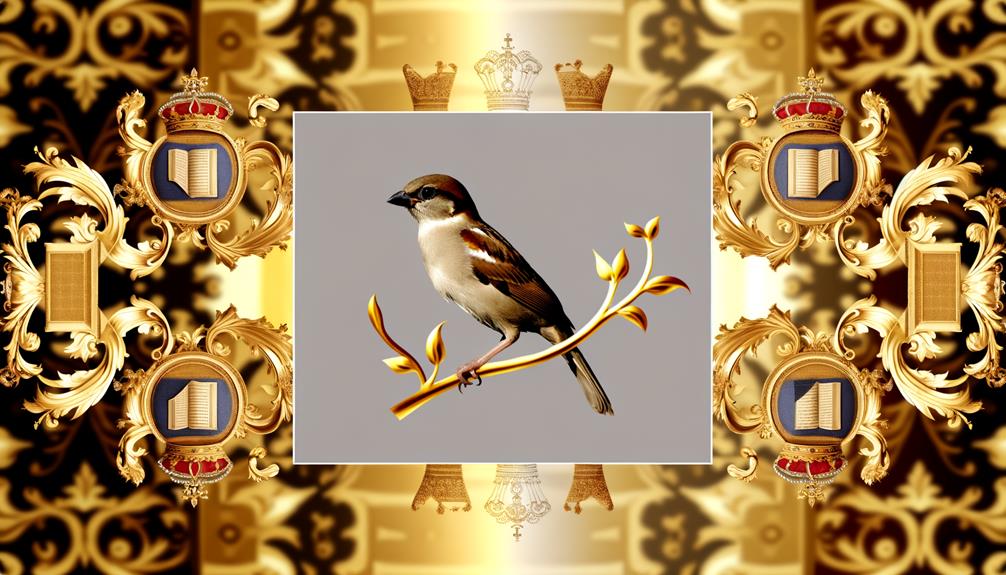
Throughout history, the sparrow has symbolized various attributes such as humility, simplicity, and community. This small bird, often overlooked due to its commonness, embodies the essence of modest living.
In literature and folklore, sparrows are frequently depicted as symbols of the working class and the unassuming aspects of daily life. Their social nature and tendency to form flocks highlight the importance of cooperation and mutual support. Sparrows' nests, built from humble materials, further signify resourcefulness and frugality.
Their persistent presence across diverse cultures underlines a universal recognition of these values. By embodying these traits, the sparrow serves as a poignant reminder of the virtues inherent in modesty and collective effort, transcending cultural and temporal boundaries.
Historical Context
In many historical contexts, sparrows have frequently symbolized the values of humility and resilience.
In ancient Egypt, sparrows were believed to catch the souls of the deceased, guiding them to the afterlife.
Greek folklore often associated sparrows with the goddess Aphrodite, representing love and fidelity.
During the Middle Ages in Europe, sparrows symbolized the common folk, embodying the idea that even the smallest creatures deserved compassion and respect.
In Chinese culture, sparrows signify joy and community, often depicted in art and literature as symbols of harmony.
These historical interpretations of the sparrow reflect a wide range of cultural values, underpinning the bird's enduring significance across different societies and eras. Such symbolism enriches the understanding of sparrows in contemporary settings.
Character Connections
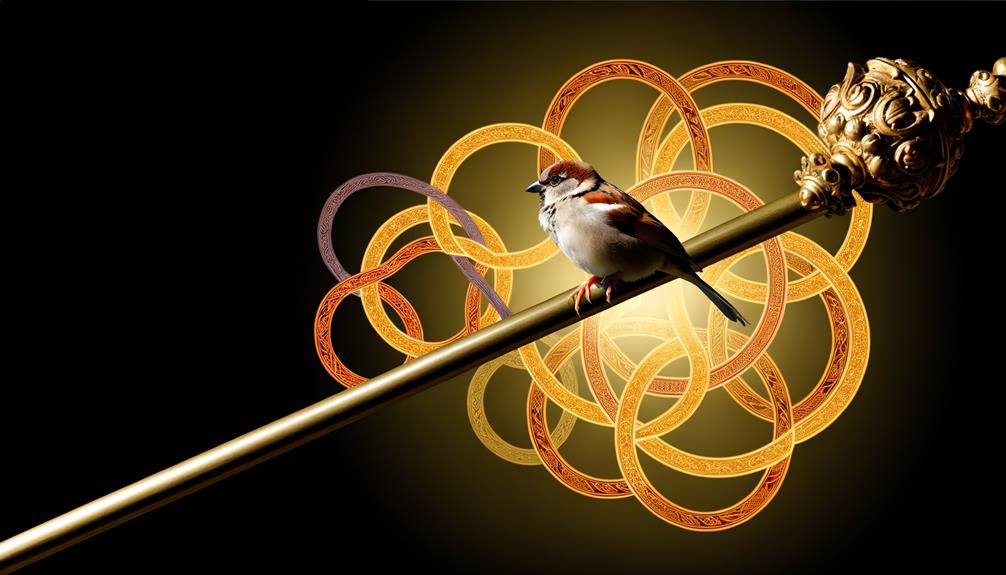
Through their symbolic association with sparrows, characters in royal narratives often reflect themes of humility, resilience, and the intrinsic value of all individuals. Sparrows, though small and seemingly insignificant, represent a deep connection to the common folk and the everyday struggles they endure.
This symbolism can be seen in the following imagery:
- A humble servant who, despite lowly status, exhibits unwavering loyalty and wisdom.
- A young prince learning the value of every subject in his domain.
- A queen who prioritizes the welfare of the poorest over grandiose displays of power.
- A displaced noble finding strength and purpose among commoners.
- A wise counselor advising rulers to value every life, no matter how small.
These connections underscore the sparrow's enduring significance in royal tales.
Themes of Freedom
Sparrows in royal narratives often symbolize the quest for freedom, embodying the desire to break free from societal constraints and oppressive structures. These small, resilient birds represent the yearning for autonomy, contrasting sharply with the rigid hierarchies and traditions that define royal life.
In literature, sparrows frequently appear as metaphors for characters who seek liberation from their prescribed roles, reflecting broader themes of emancipation and self-determination. The sparrow's ability to navigate vast skies resonates with individuals who aspire to transcend limitations imposed by birthright or duty.
Sparrow's Narrative Impact
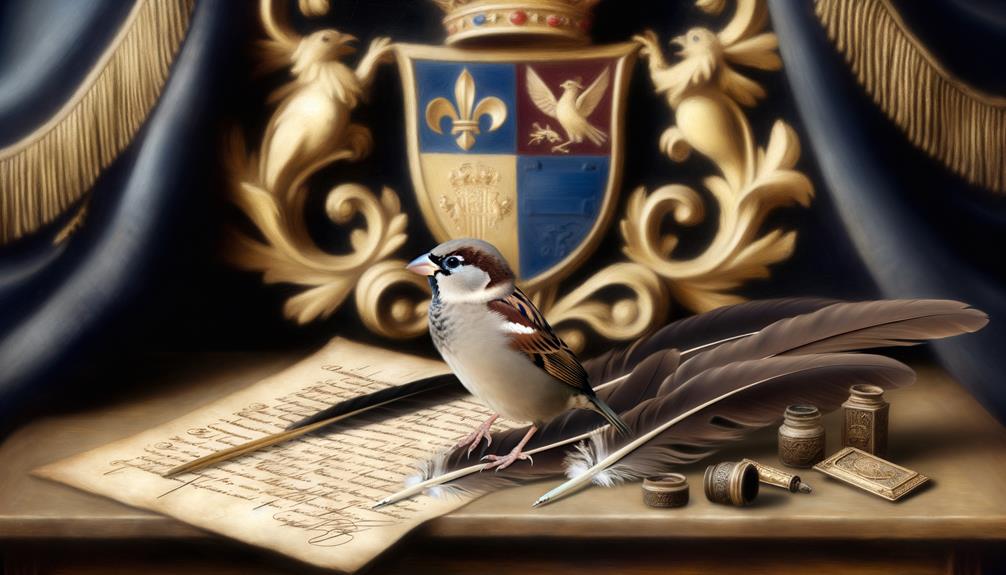
Authors often utilize the sparrow's symbolic significance to enrich the narrative depth and emotional resonance of royal stories. The sparrow frequently represents themes of resilience, humility, and transformation, aligning closely with the journeys of royal characters. Through its delicate presence, the sparrow evokes vivid imagery that enhances the storytelling experience.
- A lone sparrow perched on a royal balcony, watching over the kingdom.
- A sparrow fluttering amidst a grand coronation, unnoticed but ever-present.
- The gentle song of a sparrow breaking the silence of a royal garden.
- A sparrow's nest hidden within the ornate architecture of a palace.
- A fallen sparrow symbolizing the fragility of power and life.
These subtle yet powerful images add layers of meaning, fostering a deeper connection with the audience.
Conclusion
In the grand tapestry of 'The Royals,' the sparrow serves as a not-so-subtle metaphor, flapping its tiny wings to symbolize freedom while being caged by royal obligations.
Historically, sparrows have represented the common folk, but here they're wrapped in royal garb, struggling to escape their gilded prisons.
The sparrow's narrative impact? A gentle reminder that even in palaces, the yearning for freedom persists, albeit in silk-lined nests.
So, dear reader, the sparrow soars—albeit with a tiara.


